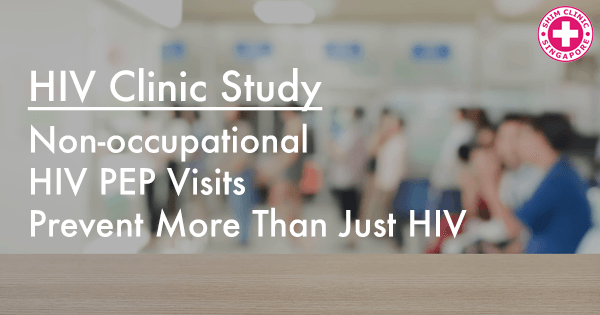Data on the use of Post Exposure Prophylaxis (PEP) to prevent HIV transmission has always been limited. To fill this knowledge gap, a study by Sivachandran and colleagues published in the International Journal of Infectious Diseases was conducted and found that PEP can be used to prevent bacterial sexually transmitted infections (STI’s) such as hepatitis C and hepatitis B.
The researchers studied 126 individuals who presented themselves at a dedicated HIV prevention clinic after a non-occupational exposure (approximately 70% were sexual exposures). The researchers analyzed concentrates, diagnosis rates, and follow-up for bacterial STI’s and viral hepatitis. The study found that nearly 5% of participants were diagnosed with a bacterial STI. While no cases of hepatitis C seroconversion occurred during the study, hepatitis C was detected in 2.4% at the beginning of the study. Interestingly, all individuals diagnosed with an infection in this group were men. About three-quarters of the participants were male. Finally, 22.2% of participants did not have protective levels of hepatitis B surface antibody at the beginning of the study and only approximately half of these individuals were retained in care long enough to complete a vaccine series or booster dose.
High Prevalence of STI’s
Bacterial STI’s, such as syphilis, chlamydia, and gonorrhea, remain highly prevalent around the globe with rising incidence rates in many at-risk populations. Additionally, hepatitis B and C continue to cause significant deaths and injuries throughout the world. While hepatitis B and C are treatable, and therapies for chronic hepatitis C are advancing at a very fast pace, many individuals remain undiagnosed and continue to transmit these infections to vulnerable individuals. Therefore, opportunities for screening and treatment of bacterial STI’s and viral hepatitis are vital.
nPEP Visit Can Prevent More Than Just HIV
From the study, the researchers found that nPEP visits provide an opportunity for more than HIV PEP. The study emphasized on the need to consider other infections while providing PEP care to HIV patients. The researchers suggest that for instance when a HIV patient visits a STD clinic for PEP for the first time and the care givers identify chronic hepatitis C they should link the individual to hepatitis C care even if a person is not ready for treatment. Steps can be taken to prevent worsening liver fibrosis through alcohol reduction counseling and vaccination against hepatitis A and B. The degree of liver fibrosis can be assessed and complications of cirrhosis managed. The individual can also be counseled to reduce the risk of transmitting the STI to others.
Another suggestion by the researchers was that individuals diagnosed with a bacterial STI should be considered for HIV preexposure prophylaxis (PrEP) and linked to PrEP services. Men who have sex with men (MSM) diagnosed with a bacterial STI should also be linked to PrEP services for HIV prevention because they are one of the highest risk groups for HIV infection. By treating STIs in MSM, you decrease the likelihood of HIV infection if there is ongoing risk behavior.
The research shows there is a high linkage between HIV and bacterial STIs. It is therefore important that when individuals exposed to HIV visit a clinic for PEP therapy, care givers should also screen them for STIs and offer them treatment.
Read the full research paper here: http://www.ijidonline.com/article/S1201-9712(15)00245-3/abstract

